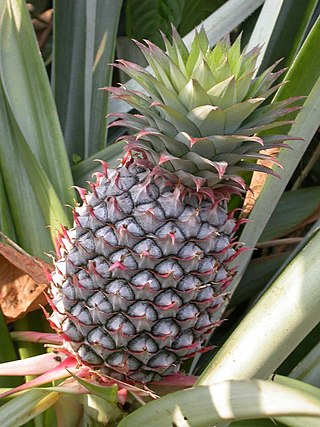
The Bromeliaceae are a family of monocot flowering plants of about 80 genera and 3700 known species, native mainly to the tropical Americas, with several species found in the American subtropics and one in tropical west Africa, Pitcairnia feliciana.

Araeococcus is a genus of the botanical family Bromeliaceae, subfamily Bromelioideae. It is native to northern South America, Central America and Trinidad.

Cryptanthus is a genus of flowering plants in the family Bromeliaceae, subfamily Bromelioideae. The genus name is from the Greek cryptos (hidden) and anthos (flower). The genus formerly had two recognized subgenera: the type subgenus and subgenus HoplocryptanthusMez which has been raised to the separate genus Hoplocryptanthus. All species of this genus are endemic to Brazil. The common name for any Cryptanthus is "Earth star".

Bromelioideae is a subfamily of the bromeliads (Bromeliaceae). This subfamily is the most diverse in the family, represented by the greatest number of genera with about 40. Most of the plants in this group are epiphytes, though some have evolved in, or will adapt to, terrestrial conditions. This subfamily features the most plant types which are commonly cultivated by people, including the pineapple.
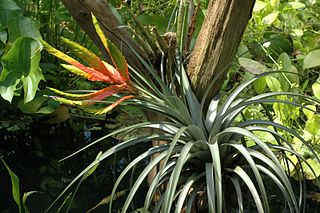
Tillandsioideae is a subfamily of plants in the bromeliad family Bromeliaceae. This subfamily contains the greatest number of species. Most are epiphytic or lithophytic, growing in trees or on rocks where they absorb water and nutrients from the air. Spanish moss of the genus Tillandsia is a well-known species. Bromeliads in the genera Guzmania and Vriesea are the more commonly cultivated members of this subfamily.

Orthophytum is a genus in the plant family Bromeliaceae, subfamily Bromelioideae.
Pseudaraeococcus montanus is a species of flowering plant in the family Bromeliaceae, endemic to Brazil. It was first described in 1999 as Araeococcus montanus.
Pseudaraeococcus nigropurpureus is a species of flowering plant in the family Bromeliaceae, endemic to Brazil. It was first described in 2007 as Araeococcus nigropurpureus.
Pseudaraeococcus sessiliflorus is a species of flowering plant in the family Bromeliaceae, endemic to Brazil. It was first described in 2007 as Araeococcus sessiliflorus.
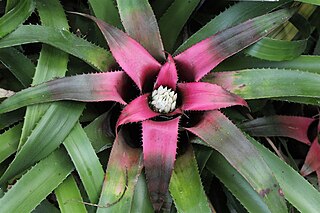
Hylaeaicum is a genus of flowering plant in the family Bromeliaceae, native to tropical northern South America. The taxon was first described by Ernst Heinrich Georg Ule in 1935 as a subgenus of "Aregelia". It was later treated as a subgenus of Neoregelia, before being raised to a full genus in 2021, a status accepted by both Plants of the World Online and the Encyclopaedia of Bromeliads.
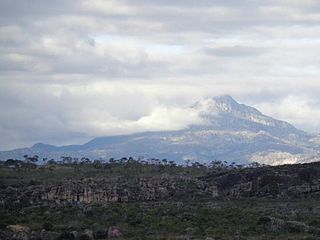
The Pico do Itambé State Park is a state park in the state of Minas Gerais, Brazil. It protects one of the higher peaks in the state.
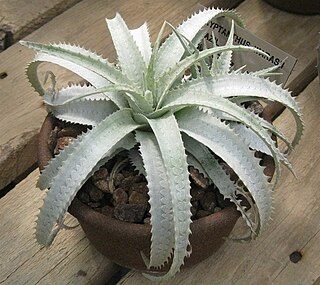
Forzzaea is a genus of eu-bromelioids in the family Bromeliaceae, native to the Atlantic coastal forest of Brazil, and described in 2017.

Zizkaea is a monotypic genus of flowering plants belonging to the family Bromeliaceae. It only contains one known species, Zizkaea tuerckheimii.
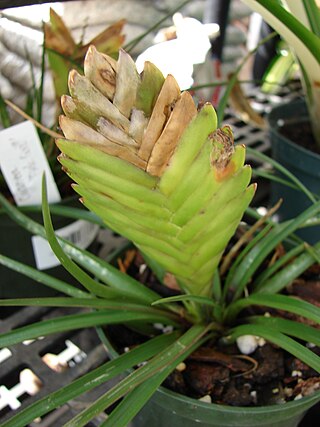
Wallisia is a genus of flowering plants belonging to the family Bromeliaceae. It is also in the Tillandsioideae subfamily.
Jagrantia is a monotypic genus of flowering plants belonging to the family Bromeliaceae. It only contains one species, Jagrantia monstrum.

Goudaea is a genus of flowering plants belonging to the family Bromeliaceae.

Gregbrownia is a genus of flowering plants belonging to the family Bromeliaceae.

Lemeltonia is a genus of flowering plants belonging to the family Bromeliaceae.

Rokautskyia is a genus of flowering plant in the family Bromeliaceae, native to eastern Brazil. The genus was first established in 2017, and is placed in subfamily Bromelioideae.
Pseudaraeococcus is a genus of flowering plant in the family Bromeliaceae, native to northeastern Brazil. It was first described as the subgenus Pseudaraeococcus of the genus Araeococcus by Carl Christian Mez in 1935, and raised to a separate genus in 2020.














